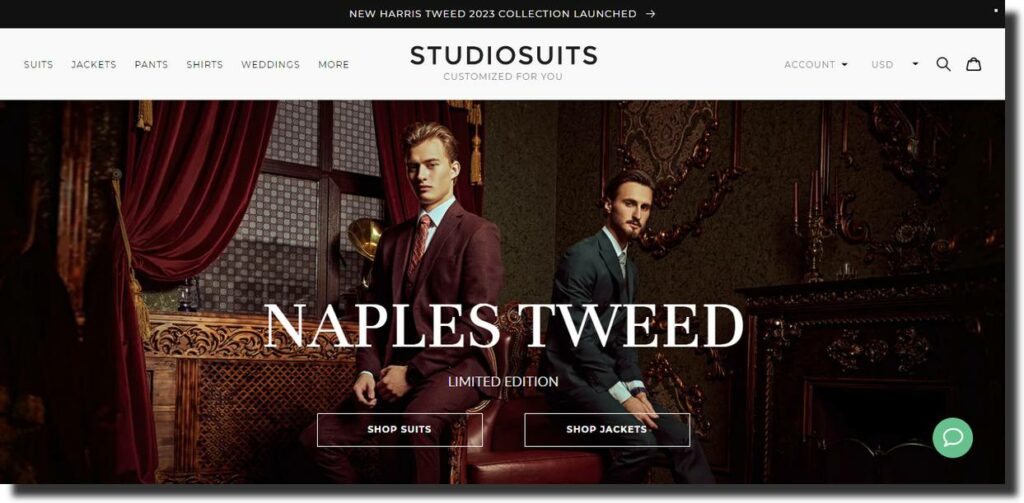The Best Fluffy Pancakes recipe you will fall in love with. Full of tips and tricks to help you make the best pancakes.
If you have ever neglected colors on your company’s website, social channels, and packaging — you’re already losing enormous revenue.
Think about it this way. You visit an online store to buy your favorite sneakers. You scroll through numerous product pages on the website and finally land on the sneakers of your dreams.
You’re ready to checkout, but the checkout button is nowhere in sight. There’s no big red button with a white font that says “checkout now.”
The result? You bounce off the website and find the next best website that sells the same sneakers.
So what went wrong? It’s the text color. The color of the text and the background were muted — making it difficult for the customer to read it. Who knew color played such a crucial role in driving conversions?
Don’t worry. We have you covered. In this article, we’ll share the importance of color in brand advertising for your business.
Are you ready to learn more ways to boost brand awareness and improve your bottom line?
Let’s dive in.
Table of Contents
Why Are Colors An Effective Element Of Brand Advertising?
Here’s how color in brand advertising can impact your organizational branding, sales, and conversions.
Helps With Brand Recognition
When you consistently use the same colors in brand advertising, people recognize you for your brand colors. It sounds simple, but it helps your brand stand out amidst the noise of other brands.
You can differentiate yourself with the colors you use in your packaging, product images, and social presence.
Take Starbucks as the perfect example. When people see the green mermaid against a white cup, they know it’s a Starbucks drink.
Notice how Starbucks doesn’t need to include the brand name on their cups. It’s a simple yet recognizable design with two colors: green and white. That’s the power of brand recognition.

Here’s another example of how color can help with brand recognition.
If you own a cleaning business that sells car products like steering wheel cleaners, tire shine, and leather cleaners, using a mix of basic colors (black, white, gray) and vibrant colors on your packaging can help you stand out from the crowd.
This strategy instantly catches the audience’s attention and helps customers recognize your brand for future purchases.
For instance, the next time your customer goes to Walmart. They’ll look for your brand colors to quickly locate your product on the shelf. Otherwise, they might have opted for the cheapest option. But instead, they could quickly spot your product.
It’s a simple way to stand out and drive repeat purchases. That’s what we call a win-win.
Evokes Emotions
Color psychology plays an important role in evoking emotions. If you study the color wheel, you’ll understand the emotions each color signifies.
Here’s a short list of the emotions associated with each color:
- Red – Excitement, youthful, bold, urgency
- Blue – Trustworthy, professional, dependable
- Orange – Friendly, welcoming, cheerful, confident
- Yellow – Happiness, optimism
- Green – Peaceful, balanced, growth
- White – Simplicity, clarity, purity
For instance, Pen Tool Co, a company specializing in power tool sales, uses blue, yellow, orange, and gray to convey a feeling of authority and knowledge within the manufacturing and building industry.

Here’s another stellar example of a brand in the ecommerce space. YUPLAY uses the perfect balance of colors on its website — from its colorful logo to the header, graphics, CTAs, and prices.

For instance, they highlight the price of the PC game in turquoise. Not only does the color stand out from the black background, but it also sparks a sense of trust.
The brand takes it one step further by showing the before and after prices, further driving home that the customer is getting the best deal.
3 Ways to Use Colors In Brand Advertising
Colors are critical in brand advertising, and you must know how to use them correctly.
Here are three simple ways you can use colors to amplify your marketing strategies:
1. Define Your Brand’s Purpose And Positioning
Brand purpose is the reason your company exists beyond making money.
This element connects people with your brand and tells them what you, as the company, are doing to contribute to the community through your business — like planting trees, contributing to climate change, sustainability, improving emotional health, and so on.
To determine your brand’s purpose:
- Determine the cultural tension — find something relevant happening in the world that you can change with your business
- Determine your business’ most authentic self — what your company delivers the best
- Determine the big idea — the intersection of these two areas and find the sweet spot to use as your brand’s purpose
Once you’ve identified your brand’s purpose, it’s time to position it with a positioning statement. Brand positioning is the unique value a brand presents to its customers to establish its brand identity while conveying its value proposition.
Moreover, use brand positioning to help build a positive perception of your brand. The best part, you can customize it to your heart’s desire.
When creating a brand purpose statement, consider the following questions:
- Who’s your target market or customer?
- What is your product or service category?
- What is the greatest benefit of your product or service?
- What is proof of that benefit?
2. Create a Brand Color Palette
Brand colors are the key components of a brand’s visual identity. The full range of colors that make up these colors determine brand identity.
Two types of brand colors help you create your brand’s color palette:
| Primary colors | Primary colors are the main, consistent colors in the graphics. Once you have defined the primary color for your brand, you can’t change it unless you decide to take on a full rebrand down the road. |
| Secondary colors | Secondary colors are the complementary colors you can use with the primary ones. The most beneficial part about using them is that they can vary to complement the primary brand colors. |
Before you start creating your color palette, ask yourself:
- What are my brand guidelines?
- What are my brand values?
- What do I want my customers to do when they see my brand?
- What emotions do I want to evoke in my customers with these colors?
With these answers in mind, choose three colors that align with your brand.
- Choose a dominating or primary color for your brand
- Select two more complimentary or secondary colors for your CTAs and fonts
Take a look at how StudioSuits uses brand colors. They use a mix of warm and cool colors on their website, creating the effect of a touch of luxury.

Why it works: The choice of colors helps draw a tasteful and sophisticated image for the brand.
How to implement: To use more than three colors in your brand color palette, have white and black as the primary colors. Then, decide what appeal you want the colors to give your audience.
You can choose muted, neutral tones if you prefer a modern and elegant look. If you want a retro and vintage look, choose a combination of neutrals and browns.
Use the color wheel to find contrasting colors, or try a color palette generator that generates multiple secondary colors that contrast your chosen primary colors.
3. Create a Polished Logo
Color is one of the first things that people see. It grabs their attention and can make or break a first impression. And often, a logo is the first introduction to your brand. So you need to make it count.
Why?
A logo is an image that represents a company, product line, or service through colors and shapes. It’ll include the company’s name or monogram and the image.
The goal is that anyone who views your logo can easily understand who it represents and what they stand for. And it gives them an idea of the kind of experience they can expect from the company.
Once you’ve identified your brand colors, it’ll be easy for you to decide the ratio of colors you need. But before you reach that stage, define how you want your logo to look:
- Do you want it to be a monogram?
- Do you want it to have an icon or an interactive image?
- Do you want to use your brand’s full name?
- Do you want to play around with the initials of your brand and graphics?
Decide how and what matters most to you. Undoubtedly, it can be overwhelming at the beginning. So, you can draw inspiration from Pinterest or Behance and study the logos of other brands. Focus on three things:
- The ratio of colors used
- The type of logo
- The fonts used
Here’s an example of FoxDsgn’s clean and minimal logo.
Why it works: They use a simple fox graphic in orange among the brand name written in a bold font with whitespace, emphasizing their brand colors — black, white, and orange.

How to Implement: Once you’ve identified your brand colors, decide how you want the logo to appeal to consumers — clean and minimal, minimal and modern, retro or quirky.
Now define whether you want the logo to have the initials of your brand name, full name, or company name combined with graphics. If you opt for graphics, find ones that symbolize your brand or are closely related to your brand.
If you’re drawing a blank, take a peek at some online vector images for inspiration. You never know what you might find!
Also, make sure you create multiple versions of your logo. The first version should include a colored background that you’ll feature on your website and social profiles.
Create a second version by removing the image background. That way, you can use it for all of your other branding elements. A transparent background allows you to add it to anything printed or online. Piece of cake!
Cut The Noise With Colors
Whether you work in SaaS marketing or ecommerce marketing, color is crucial in every industry. What matters is cutting the noise and standing out among zillions of other brands.
When you define the values of your business, you can select a color palette that establishes your unique visual identity and influences the audience’s emotions — impacting their buying decisions.
Don’t rush the design process. The small details matter. And sometimes, it’s better to measure twice and cut once. If you need any help in the design process, FoxDsgn can help you find the right agency for your needs.
The post was written by Nidhi Kala, freelance writer for B2B SaaS brands in marketing, HR, and eCommerce and Roksolana Kozakevych, Content Manager at UPQODE.